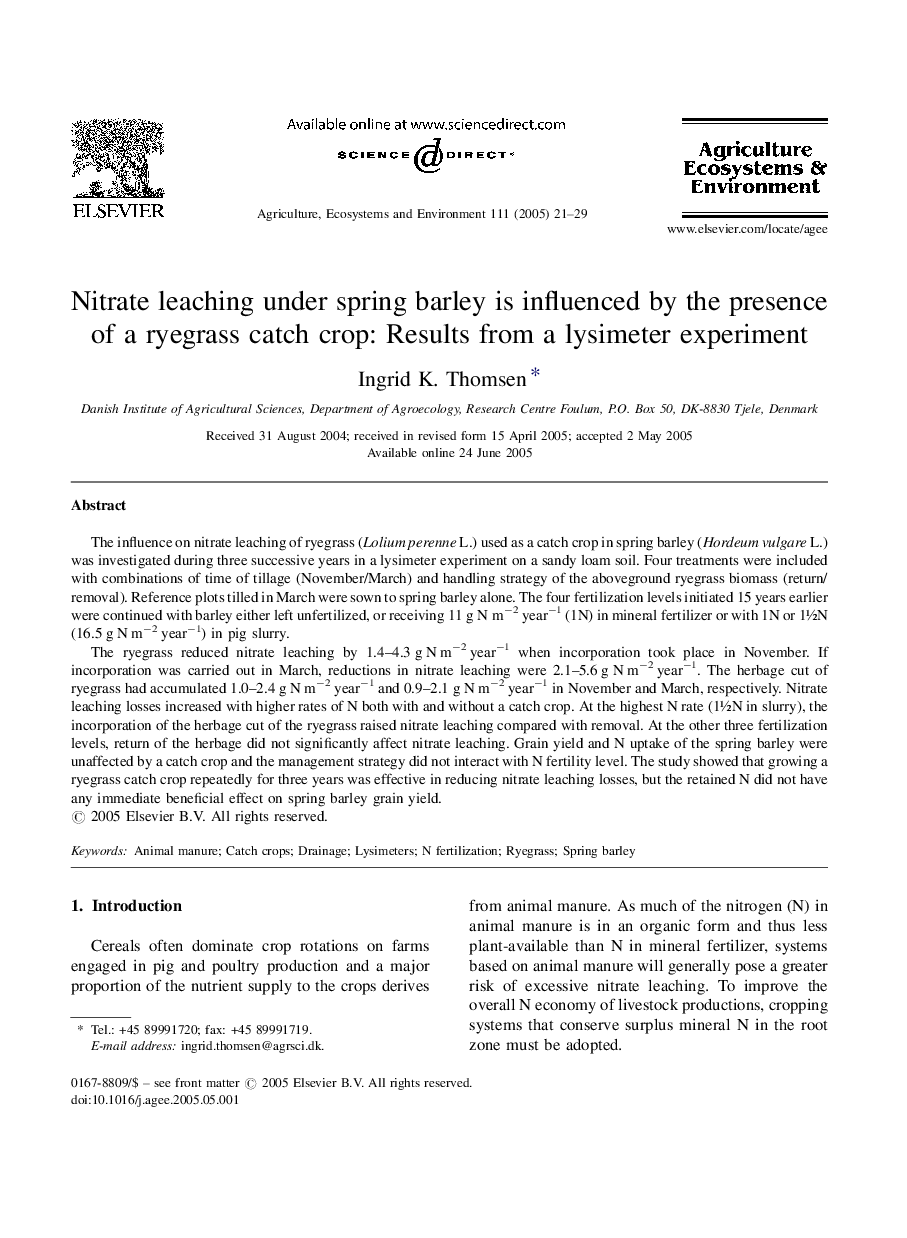| Article ID | Journal | Published Year | Pages | File Type |
|---|---|---|---|---|
| 8970715 | Agriculture, Ecosystems & Environment | 2005 | 9 Pages |
Abstract
The ryegrass reduced nitrate leaching by 1.4-4.3 g N mâ2 yearâ1 when incorporation took place in November. If incorporation was carried out in March, reductions in nitrate leaching were 2.1-5.6 g N mâ2 yearâ1. The herbage cut of ryegrass had accumulated 1.0-2.4 g N mâ2 yearâ1 and 0.9-2.1 g N mâ2 yearâ1 in November and March, respectively. Nitrate leaching losses increased with higher rates of N both with and without a catch crop. At the highest N rate (112N in slurry), the incorporation of the herbage cut of the ryegrass raised nitrate leaching compared with removal. At the other three fertilization levels, return of the herbage did not significantly affect nitrate leaching. Grain yield and N uptake of the spring barley were unaffected by a catch crop and the management strategy did not interact with N fertility level. The study showed that growing a ryegrass catch crop repeatedly for three years was effective in reducing nitrate leaching losses, but the retained N did not have any immediate beneficial effect on spring barley grain yield.
Related Topics
Life Sciences
Agricultural and Biological Sciences
Agronomy and Crop Science
Authors
Ingrid K. Thomsen,
